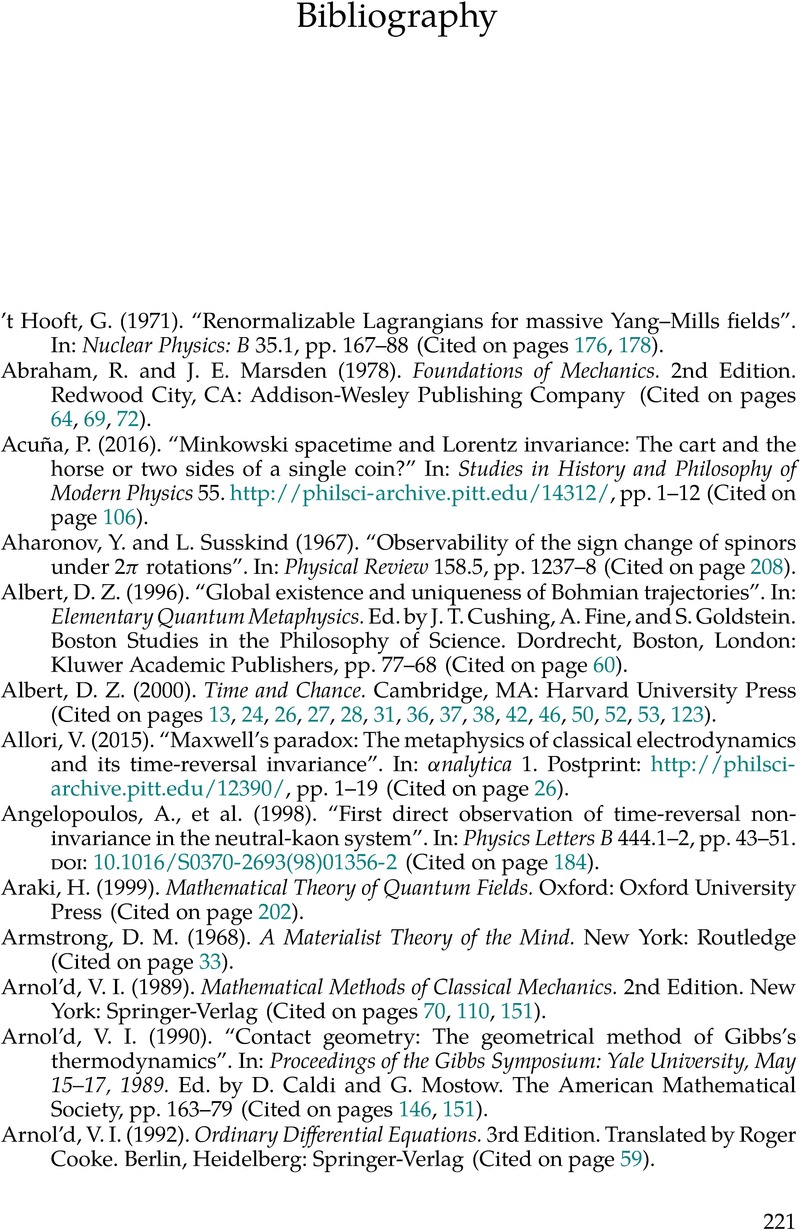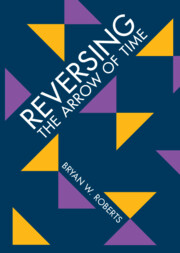Book contents
- Frontmatter
- Contents
- What Is in This Book
- Acknowledgements
- 1 A Brief History of Time Reversal
- 2 What Time Reversal Means
- 3 Time Reversal in Physical Theory
- 4 Philosophy of Symmetry
- 5 Arrows That Misfire
- 6 There Is No Thermodynamic Arrow
- 7 Time Reversal Violation
- 8 Representing CPT
- Epilogue
- Bibliography
- Index
- References
Bibliography
Published online by Cambridge University Press: 24 November 2022
- Frontmatter
- Contents
- What Is in This Book
- Acknowledgements
- 1 A Brief History of Time Reversal
- 2 What Time Reversal Means
- 3 Time Reversal in Physical Theory
- 4 Philosophy of Symmetry
- 5 Arrows That Misfire
- 6 There Is No Thermodynamic Arrow
- 7 Time Reversal Violation
- 8 Representing CPT
- Epilogue
- Bibliography
- Index
- References
Summary

- Type
- Chapter
- Information
- Reversing the Arrow of Time , pp. 221 - 248Publisher: Cambridge University PressPrint publication year: 2022
- Creative Commons
- This content is Open Access and distributed under the terms of the Creative Commons Attribution licence CC-BY-NC-ND 4.0 https://creativecommons.org/cclicenses/

